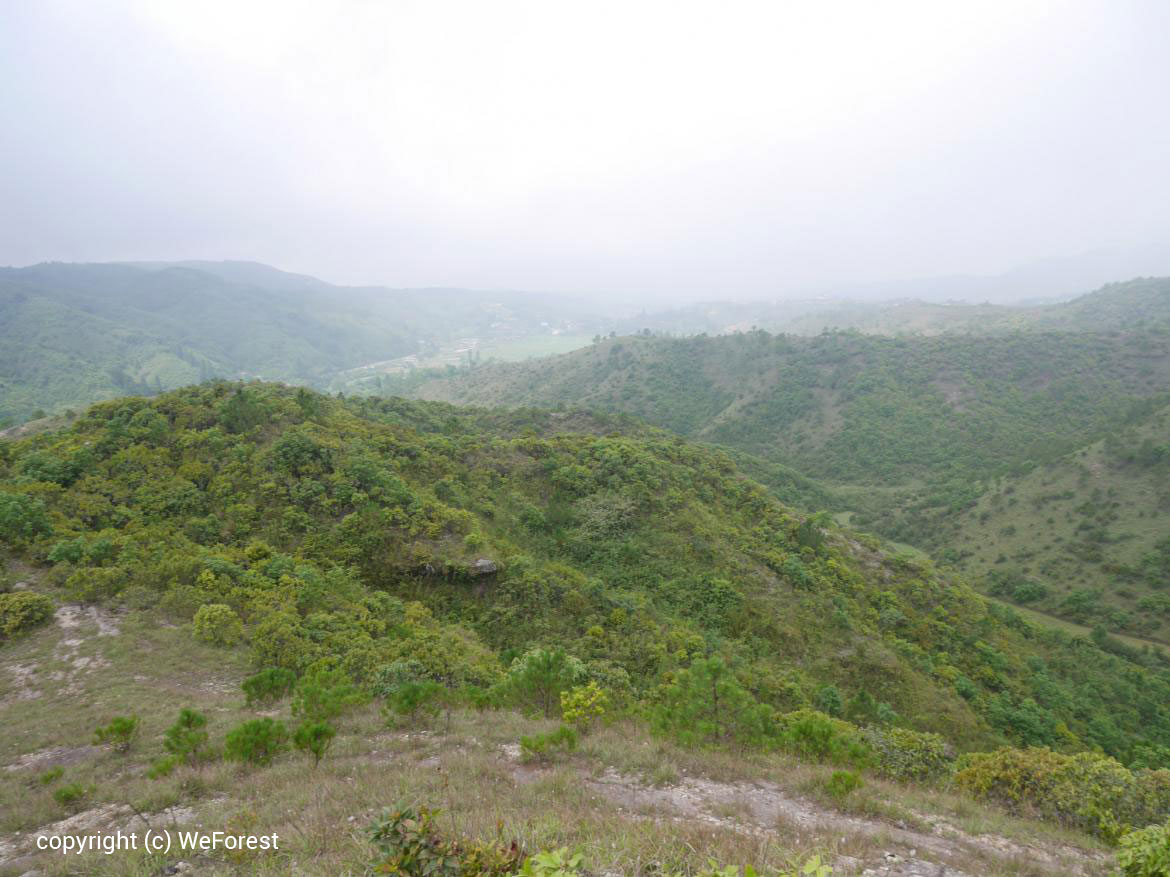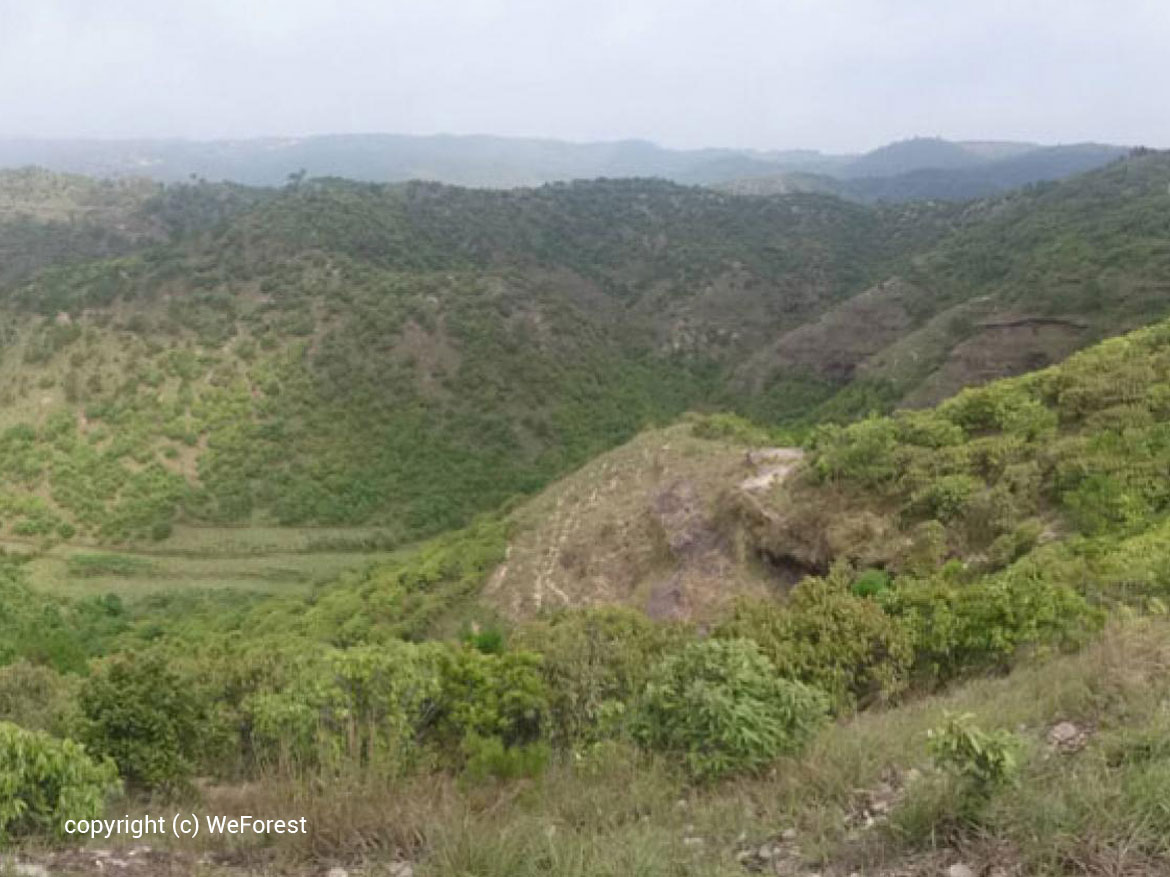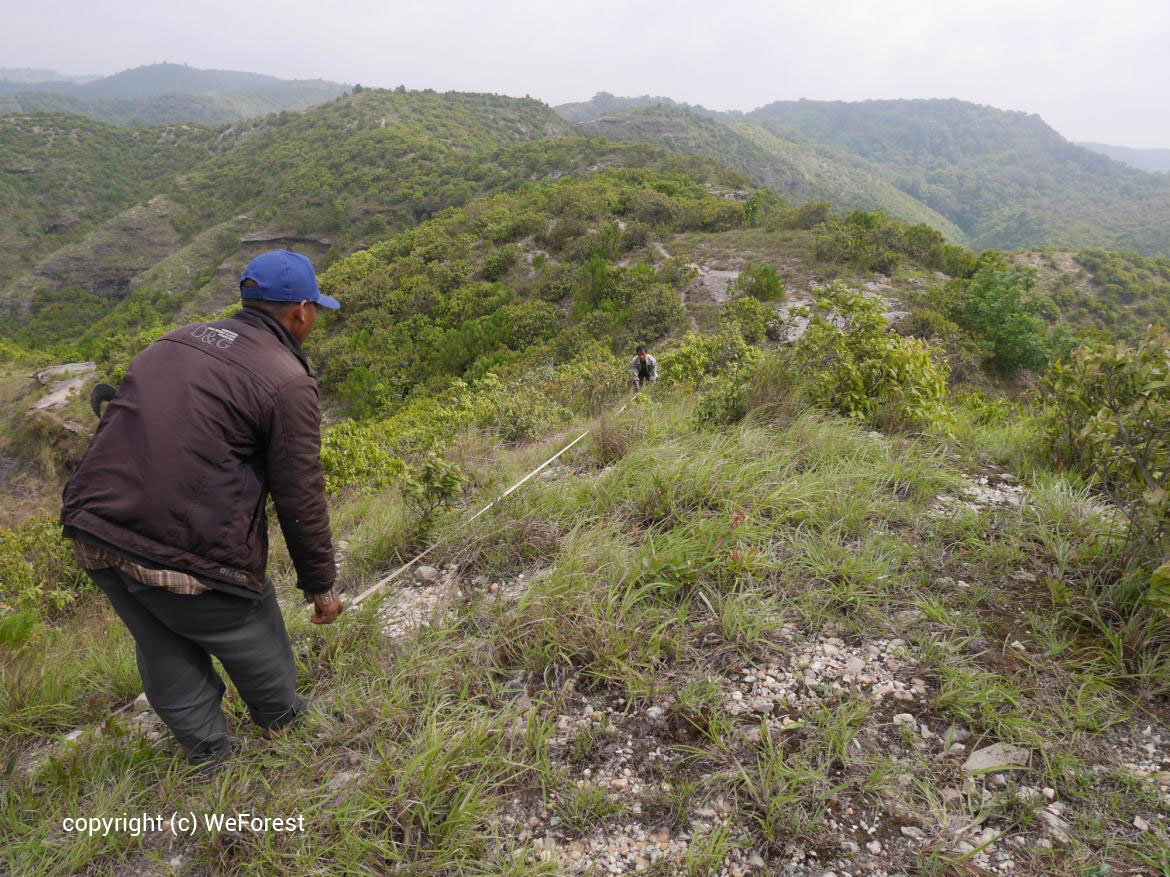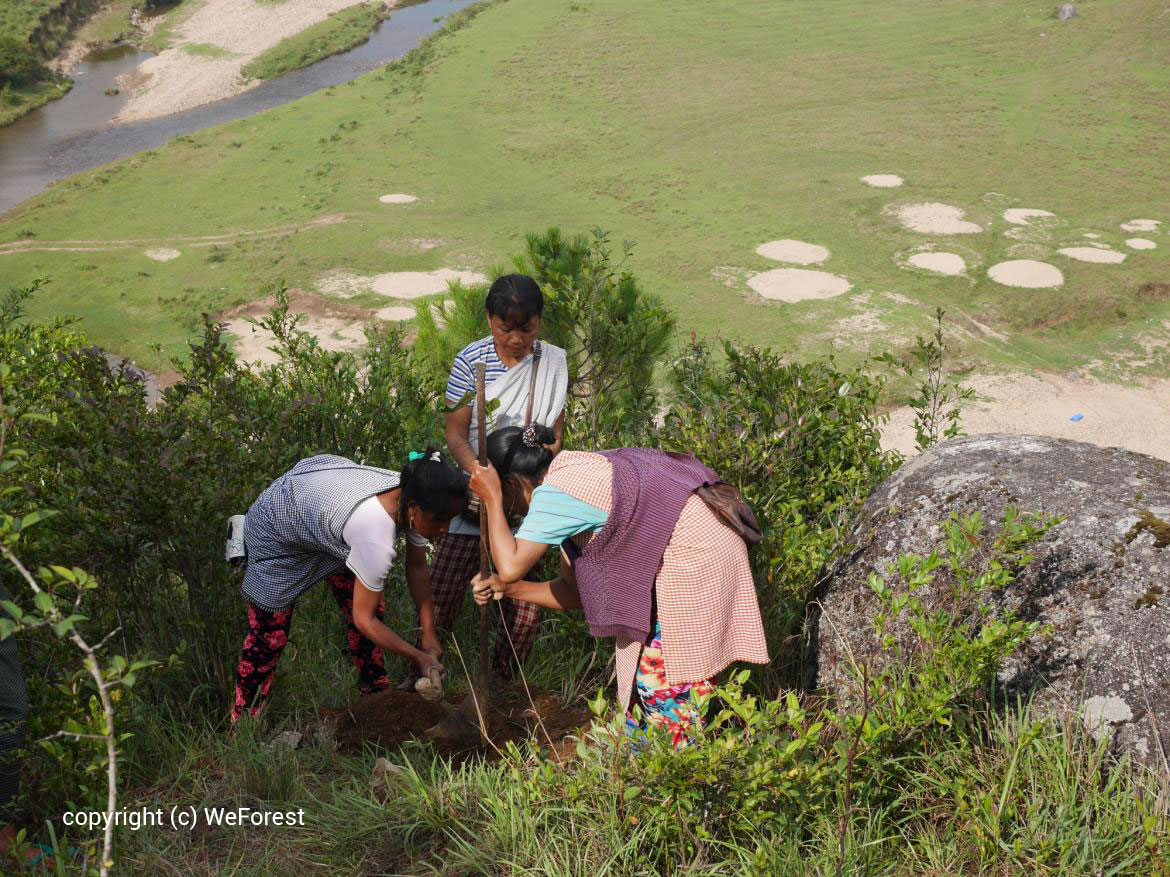Project Summary
The Khasi Hills are located in what has been described as the wettest place on earth, the Meghalaya ecoregion. The area is rich in biodiversity, home to sacred forests, ancient stone monoliths and Khasi communities. It is also under threat from deforestation and degradation. The project seeks to combat deforestation and restore the area's forests for the benefit of people and nature. Through assisted natural regeneration and sustainable livelihood development, the area's biodiversity and Khasi communities can flourish together. Local communities are empowered through a number of livelihood initiatives to foster entrepreneurship and build livelihood resilience, reducing pressures on the forest. This, coupled with education to change lifestyles and attitudes towards the forest, decreases the extraction of timber for energy and firewood. Distributions of fuel-efficient cookers, with subsidies for the majority, target the 5,000 households in the project area to reduce fuelwood consumption and improve forest and family health.
How it Works
ScrapMonster donates funds directly to support the tree restoration project in India.This is how we do it:
-
 For every basic subscriber on the ScrapMonster.com website (free subscription), we plant 1 tree.
For every basic subscriber on the ScrapMonster.com website (free subscription), we plant 1 tree. -
 For every Premium Membership on the ScrapMonster.com website, we plant 10 trees.
For every Premium Membership on the ScrapMonster.com website, we plant 10 trees. -
 For every Gold Membership on the ScrapMonster.com website, we plant 30 trees.
For every Gold Membership on the ScrapMonster.com website, we plant 30 trees. -
 For every Monster Membership on the ScrapMonster.com website, we plant 50 trees.
For every Monster Membership on the ScrapMonster.com website, we plant 50 trees. -
 Interested in planting trees directly through our project? Wonderful! You can use the "Plant trees now" button on this page and donate any amount of trees and help us reach our goal.
Interested in planting trees directly through our project? Wonderful! You can use the "Plant trees now" button on this page and donate any amount of trees and help us reach our goal.
Project Goals
RESTORATION APPROACH
Assisted natural regenerationand enrichment planting
Assisted natural regenerationand enrichment planting
ANNUAL RESTORATION POTENTIAL
498 hectares; 415,000 trees
498 hectares; 415,000 trees
NUMBER OF TREE SPECIES
40 native species
40 native species
LIVELIHOOD SCHEMES
Tree nurseries, tea stalls, poultry, piggery, ecotourism
Tree nurseries, tea stalls, poultry, piggery, ecotourism
PROJECT PARTNERS
Ka Synjuk Ki Hima Arliang Wah Umiam Mawphlang Welfare Society
Ka Synjuk Ki Hima Arliang Wah Umiam Mawphlang Welfare Society
WeForest partners with a federation of 10 indigenous governments and 62 Khasi villages with traditional forest conservation values and management structures. The intervention areas are restored through assisted natural regeneration, which involves enrichment planting, thinning, weeding and the creation of fire lines. The federation delivers strategies for Khasi communities to tackle poverty and unsustainable forest exploitation and engage directly in forest restoration. These strategies include the establishment of community-based nurseries to supply indigenous saplings for planting. The Khasi are one of the world’s few matrilineal societies so women are well represented in the project.
Why Intervention is Needed?
PROJECT LOCATION
East Khasi Hills Meghalaya district
East Khasi Hills Meghalaya district
THREATS
Charcoal, stone quarrying, grazing
Charcoal, stone quarrying, grazing
FOREST COVER LOSS
5% annually inEast Khasi Hills
5% annually inEast Khasi Hills
THREATENED ANIMALS
Chinese pangolin, clouded leopard, greater slow loris, Indian wild dog
Chinese pangolin, clouded leopard, greater slow loris, Indian wild dog
The Khasi are traditionally a forest-dependent people, relying on the native cloud forest for shelter, firewood, medicine and food. The Khasi also value their forest for its role in protecting springs, stream beds and conserving wildlife and attach spiritual significance to areas of forest identified as sacred groves. These communities are now at risk as their valuable forest is cleared for charcoal making, stone quarrying and grazing. The Meghalaya state, or “the abode of clouds” in Sanskrit, is of international importance, recognized as one of the wettest places on earth and a biodiversity hotspot.
Ecological Restoration
Restoring the forest
The forest is restored through a process known as assisted natural regeneration (ANR) to improve forest structure and composition. ANR accelerates the natural recovery of degraded forests by removing barriers helping it grow to a density of 833 trees per ha. It involves protecting and nurturing wild tree seedlings as well as enrichment planting from nurseries, planting through propagation from branch cuttings and transplanting of species to restore the forest. Areas identified for restoration become ‘no go zones’. No grazing or timber extraction is allowed in these areas, enabling the forest to recover with the restoration work and input of the communities. Financial support is given to local community members to purchase seeds which they germinate and nurture at either private or community-run nurseries, before being planted out.
Biodiversity conservation
The project works to restore the ecological functionality of the forest by reintroducing native species that have been decimated. It is important to create the right succession (introducing in the right order) of tree species so that the forest is returned to its natural state, before interference occurred. To achieve this, the tree nurseries must be closely managed to ensure the correct diversity of tree species are propagated. As the forest expands, so does the habitat available to animals and plants, safeguarding biodiversity.
Income for participating communities
Communities at the heart of the project activities
The driving force behind the effort to restore the Khasi forests is the Khasi community itself. The project empowers community members through a number of livelihood initiatives which foster entrepreneurship and builds livelihood resilience. The Khasi people are coordinated by their own traditional governance institutions to actively restore degraded areas and to control the drivers of deforestation and land degradation. The project is formed by a federation of 10 indigenous governments and 62 Khasi villages. Community members receive training in the restoration activities employed by the project, like boundary demarcation, tree measurement and monitoring using GPS as well as managing budgets and organising field operations. The Khasi are one of the world’s few matrilineal societies where inheritance flows through mothers to daughters and these women are well represented in the project.
Changing lifestyles for people and forest
Creating 'social fencing' (the agreement of 'no-go' zones) to prevent further forest overuse is key to the forest's recovery. Education and awareness-raising aims to change the community members' attitudes towards their forest; from overuse and abuse of their natural resources to more 'forest friendly' lifestyles. An element of this is the distribution of fuel-efficient cooking technologies to the households in the project area to help them to reduce fuelwood consumption. This improves both forest health and family health. The advocacy of more sustainable farming techniques alongside changes to diet also support this change towards a more sustainable community infrastructure. The local beef farming was decimating the forest undergrowth through unmanaged grazing practices; by switching to pig farming and poultry farming the communities are able to gain their protein from a less forest-damaging source. Youth volunteer groups are recruited to raise awareness about the forest restoration programme; they also help with the monitoring of forest growth.
Diversifying income to reduce pressure on forests
The Khasi communities are building greater economic resilience by diversifying their income sources, which is the key to keeping the forest standing. Community members have the opportunity to form self-help groups (farmers clubs) where they receive training in business and entrepreneurship, promote sustainable agricultural techniques and can gain access to a revolving fund to start up their own enterprise. So far these groups, have established tree nurseries, homestead poultry and piggery farms, fruit farms, plus many other enterprises.
Image copyright (c) WeForest
The Benefits of Planting
1 Million Trees in this Project
1 Million Trees in this Project
Ha restored
1200
1200
Carbon Stock - tonnes of CO2 sequestered over 20 year period
203,962
203,962
Families Benefiting
3500
3500
Community members trained in restoration techniques
1000
1000
Watershed Area
Working to support water courses in the Umian watershed
Working to support water courses in the Umian watershed
People employed directly by the restoration project
89
89
Community tree nurseries established
70
70
People benefitting from increased income
1600
1600
Indigenous tree species supported
46
46
Threatened animal species benefitting from increased habitat range
9 species on IUCN redlist
9 species on IUCN redlist












